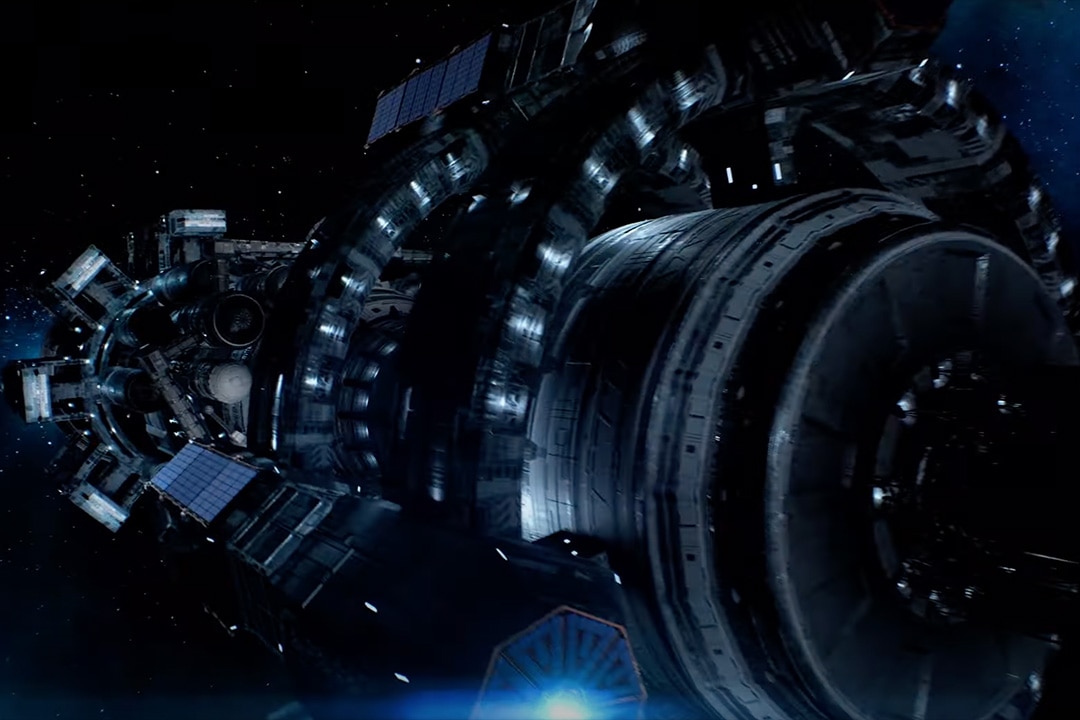Create a free profile to get unlimited access to exclusive videos, sweepstakes, and more!
NASA and DARPA are planning a nuclear powered rocket by 2027
Where can we sign up?

In SYFY’s upcoming deep space science fiction series The Ark, humanity’s last hope of survival is aboard the interstellar starship the Ark One, on their way to a new star system. When something goes wrong, with more than a year left in their journey, what’s left of the crew must band together to survive in the deadly environment of deep space.
Surviving a year off planet would be challenging enough, but even that would be a technological marvel for us. With our current propulsion technologies, it would take thousands of years to reach even the nearest star, let alone a star specially chosen for its habitable world. If we want even the opportunity of getting lost in space, we’re going to need some better propulsion systems, and NASA is partnering with DARPA to make that happen.
On Jan. 24, NASA Administrator Bill Nelson announced a partnership with the Pentagon’s Defense Advanced Research Projects Agency (DARPA) to design and demonstrate a nuclear powered spacecraft in the next few years. That announcement came during a presentation at the 2023 American Institute of Aeronautics and Astronautics (AIAA) SciTech Forum and Exposition.
RELATED: Splashdown: Orion Returns safely from the Moon! What's next for NASA's ambitious Artemis program?
NASA will be joining DARPA’s Demonstration Rocket for Agile Cislunar Operations (DRACO) program, which began in 2021. The project’s goal is to develop a nuclear thermal rocket (NTR) engine capable of powering an experimental spacecraft, in order to extend our crewed spacefaring range and reduce travel times between Earth and target locations.
“DRACO will be a critical part of evaluating the technologies that will take us deeper into the solar system. Our intent is to lead and develop a blueprint for human exploration and sustained presence throughout the solar system,” said Pam Melry, NASA Deputy Administrator, said during the presentation.
The interagency agreement between NASA and DARPA gives NASA final authority on the nuclear thermal rocket engine design and construction while DARPA retains control over the experimental spacecraft, the X-NTRV. DARPA will also be responsible for operating and disposing of the craft during and after launch.
The DRACO spacecraft will utilize fission, the process regularly used inside nuclear reactors, to generate high levels of heat. That heat will cause hydrogen fuel to expand and accelerate out of the engine nozzle, in a process not dissimilar to modern rockets. The major difference is the high performance of an NTR reactor. According to DARPA, an NTR spacecraft could have a thrust to weight ratio 10,000 times greater than electric propulsion and two to five times greater than more typical chemical propulsion.
While a nuclear powered rocket engine might sound like the stuff of science fiction, it actually builds on work from the earliest days of the United States’ space program. While the world was focused on the race for the Moon, NASA was already working toward nuclear powered spacecraft with NASA’s Nuclear Engine for Rocket Vehicle Application (NERVA) and the Rover program, both of which were working toward designing nuclear powered spacecraft for crewed missions to Mars.
“The ability to accomplish leap-ahead advances in space technology through the DRACO nuclear thermal rocket program will be essential for more efficiently and quickly transporting material to the Moon and eventually, people to Mars,” said Dr. Stefanie Tompkins, director, DARPA, according to a NASA statement.
The U.S. Space Force has also indicated support for the DRACO mission, offering to provide the launch for a demonstration flight, planned for sometime in 2027. During that flight, DARPA will conduct experiments with the reactor at various power levels and send that information back to scientists on the ground. That information will help us to better prepare for the next class of crew-ready spacecraft, headed for deep space.
In the meantime, travel through deep space with the crew of the Ark One in The Ark, premiering Feb. 1 on SYFY.































